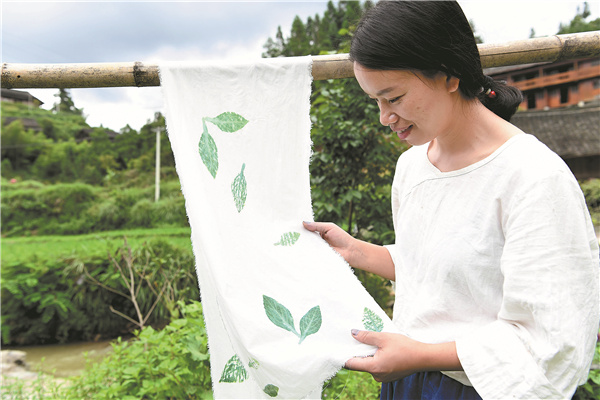

Dong craftsmanship enjoys a revival as traditional fabric finds new fans at home and abroad, Yang Feiyue reports.
In an ethnic Dong village tucked away in the mountains, the children of German and Spanish families were running around and playing together in late October.
Their laughter echoed in the small valley in Fengdeng village, where Yang Chenglan offered them a demonstration of how Dong cloth was made from scratch in a cozy wooden homestay nestling in the verdant surroundings.
"They loved it here, the pristine natural environment and serenity," says Yang, who was born and bred in the village in Rongjiang county, Qiandongnan Miao and Dong autonomous prefecture, Southwest China's Guizhou province.
"Moreover, they found it refreshing that young people are inheriting cultural craftsmanship that is very close to their heart," the woman in her 30s adds.
Those international guests who trekked a long way off the beaten track to her studio were there mostly to appreciate the Dong cloth craft that Yang has made internationally popular over the years.
Due to her resolve to keep the folk art alive and her persistence in carrying it forward, Yang has managed to restore the technique of weaving, dyeing and sun-drying in her studio.
Visitors can, literally, get their hands dirty, by seeing how cotton is grown, spinning it into yarn, weaving it and dyeing the fabrics.
"It takes more than 30 steps to turn cotton into Dong fabric," Yang says.
"The handmade fabric is soft, breathable and moisture-absorbing."
Yang has developed fashionable batik bags, clothing and shoes among other products using Dong cloth that have become popular among consumers at home and abroad.
"The price of our local fabric can now be as high as 400 yuan ($56) per meter," Yang says with pride, adding that the price indicates market recognition of the folk art.
"In addition to the domestic market, our products have also made their way to countries such as Japan and Australia," Yang says.